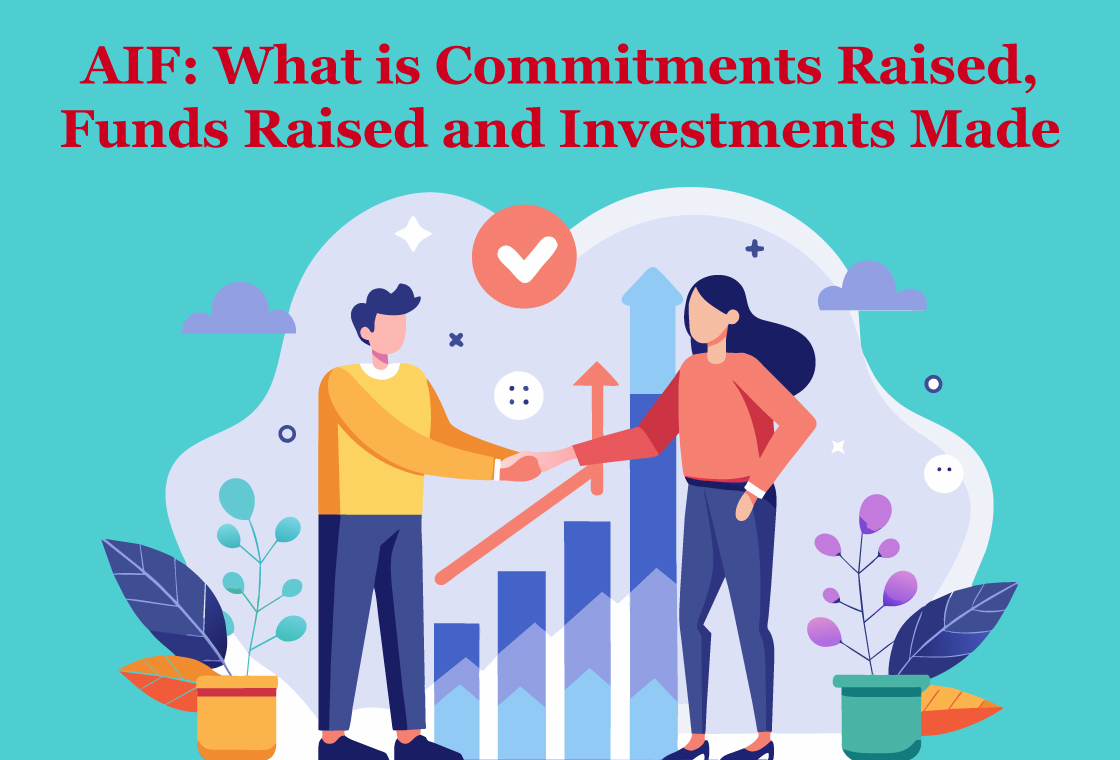Alternative Investment Funds (AIFs) have emerged as a dynamic force in the Indian financial landscape.

They offer investors a gateway to a diverse universe of assets beyond traditional portfolios and assets. However, navigating the world of AIFs can be daunting, especially when encountering terms like "commitments raised," "funds raised," and "investments made." This in-depth exploration aims to demystify these concepts and empower Indian investors with a clear understanding of the AIF investment cycle.
Dissecting AIF Lifecycle
An AIF's journey can be segmented into three distinct stages:
1. Commitment Raising: This phase lays the foundation. The fund manager spearheads efforts to attract investors and secure their pledges to contribute a specific amount of capital, known as commitments. These commitments are not immediate cash infusions; rather, they represent a promise to invest at a designated future date. The success of this stage determines the potential size of the fund and reflects investor confidence in the proposed strategy.
2. Fund Raising: Once sufficient commitments are secured, the AIF transitions to the fund raising stage. This is where the "promise" transforms into tangible resources. Investors fulfill their commitments, contributing the pledged capital to the fund. The pooled money becomes the investment war chest for the fund manager.
3. Investments Made: With the capital secured, the AIF manager assumes the role of a strategic investor. Leveraging expertise and investment strategy, the manager deploys the raised funds into the targeted asset classes as outlined in the AIF's investment mandate. This stage signifies the actual placement of capital into ventures, real estate projects, or debt instruments, depending on the AIF's focus.
Commitments vs. Funds Raised vs. Investments Made
While these terms may appear interchangeable, each holds a distinct meaning within the AIF ecosystem:
- Commitments Raised: This represents the future potential of the AIF. It signifies the aggregate amount investors have pledged to contribute. A high level of committed capital indicates strong investor interest and the possibility of a larger fund size.
- Funds Raised: This refers to the actual money collected from investors after they fulfill their commitments. It signifies the available resources at the fund manager's disposal for investment.
- Investments Made: This reflects the deployment of the raised funds into the targeted assets. It signifies the active allocation of capital based on the AIF's investment strategy.
Why Does This Matters to Indian Investors?
Understanding these distinctions empowers Indian investors to make informed decisions:
- Fund Size and Diversification: Higher committed capital translates to a potentially larger AIF. Larger funds can offer greater diversification across asset classes, potentially mitigating risk through economies of scale.
- Investor Appetite: Strong commitments can signal investor confidence in the AIF's strategy, potentially indicating a promising investment opportunity.
- Investment Timeline: The time lag between commitments raised and funds raised can impact the investment timeline. Investors should factor this in when making investment decisions.
Documents, Terms That Will Come Up
Here's a breakdown of some additional documents, terms, and concepts investors might encounter when exploring commitments raised, funds raised, and investments made in the context of AIFs.
- Private Placement Memorandum (PPM): This document acts as the cornerstone, outlining the AIF's strategy. Critically, it details the target commitment amount the fund manager seeks to raise. This sets the stage for the potential size of the AIF, based on the total commitments raised from investors.
- Subscription Agreement: This legal document formalises an investor's commitment, specifying the amount they pledge to contribute to the AIF. It signifies their intent to participate, contributing to the funds raised once the commitment raising stage concludes.
- Lock-up Period: This impacts the investments made. During this period, investor capital is locked into the AIF, allowing the manager to strategically deploy the funds raised into targeted assets as per the AIF's investment strategy.
- Management Fees: These fees are often calculated as a percentage of the committed capital.
Conclusion
By grasping the nuances of commitments raised, funds raised, and investments made, you can make informed decisions about whether an AIF aligns with your investment goals and risk tolerance. Consulting a financial advisor specialising in alternative investments can be invaluable in navigating the AIF landscape and selecting the right fund for your investment journey.
Disclaimer: This Blog is made for informational purposes only and does not constitute an offer, solicitation, or an invitation to the public in general to invest in any AIF. PMS Bazaar has taken due care and caution in the compilation of data and information. However, PMS Bazaar doesn’t guarantee the accuracy, adequacy, or completeness of any information. Investors must read the detailed Private Placement Memorandum (PPM), including the risk factors, and consult your Financial Advisor before making any investment decision/contribution to AIF. This Blog has been prepared for general guidance, and no person should act upon any information contained in the document. PMS Bazaar, its affiliates, and their office, directors, and employees shall not be responsible or liable for any investment action initiated. This Blog is intended only for the personal use to which it is addressed and not for distribution.